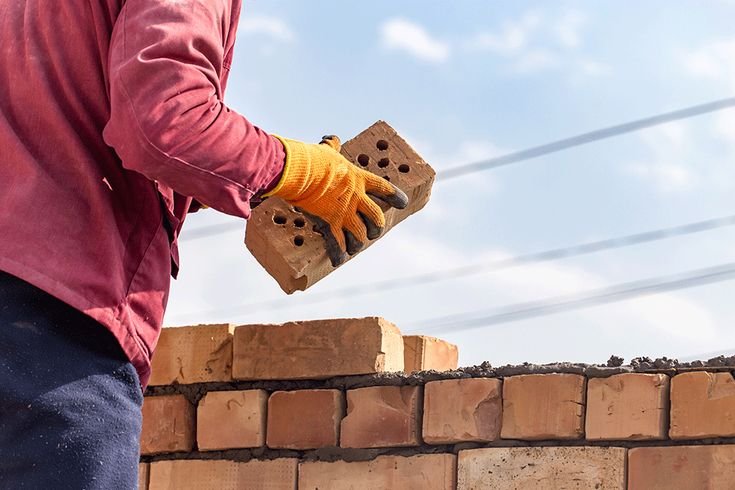Bricklaying – Level 2
About this course
Bricklaying – Level 2
Course Contents
Module 1: Health, Safety, and Welfare in Construction
Legislation (e.g., OSHA, HSE, or local regulations)
Risk assessments and method statements
PPE (Personal Protective Equipment)
Safe handling of materials and tools
Working at heights and scaffolding safety
Module 2: Materials and Their Properties
Types of bricks and blocks (clay, concrete, aerated)
Mortar mixes (ratios, additives, mixing techniques)
Damp-proof courses (DPC) and membranes
Thermal and acoustic insulation materials
Module 3: Setting Out and Building Masonry Structures
Interpreting construction drawings and specifications
Setting out foundations and profiles
Building straight walls, corners, and returns
Constructing cavity walls (ties, insulation, weep holes)
Module 4: Advanced Bricklaying Techniques
Bonding patterns (English, Flemish, stretcher, header)
Constructing arches (segmental, semi-circular)
Building piers and chimneys
Fireplaces and hearths (basic introduction)
Module 5: Working with Other Materials
Stone laying basics (natural and artificial)
Reinforced brickwork (lintels, beams)
Combining brickwork with blockwork
Module 6: Finishing and Jointing
Pointing techniques (flush, weatherstruck, recessed)
Tooling joints for durability and aesthetics
Cleaning and maintaining brickwork
Module 7: Building Technology
Understanding damp and ventilation in masonry
Basic drainage principles for brickwork (e.g., gullies)
Introduction to sustainable bricklaying practices
Module 8: Practical Projects and Assessments
Constructing a cavity wall with openings
Building a garden wall with piers
Creating a brick arch or feature
Repair and maintenance tasks (repointing, replacing bricks)
Module 9: Career Skills and Next Steps
Workplace communication and teamwork
Introduction to site supervision
Pathways to Level 3 or apprenticeships
Portfolio building for certification (e.g., NVQ evidence)
Assessment Methods:
Practical tasks (observed, photo evidence)
Written tests (short answer, multiple-choice)
Portfolio of work (drawings, project photos)
Oral questioning (to confirm understanding)
Tools and Resources Needed:
Trowels, levels, line pins, spirit levels
Mixing equipment (cement mixer, mortar boards)
Bricks, blocks, mortar materials
PPE (gloves, goggles, steel-toe boots)
This outline ensures a balance of theory and hands-on practice, preparing learners for real-world bricklaying scenarios. Adjust based on regional standards or accreditation requirements.
Comments (0)
Health, Safety, and Welfare in construction encompass various measures to protect workers from accidents and ensure their well-being. This includes preventing falls, electrocution, and exposure to hazardous materials, as well as providing adequate facilities for rest, sanitation, and meals.
Materials are substances with specific characteristics, and these characteristics are called properties. Material properties determine how a material behaves under different conditions and can be categorized into physical, chemical, and mechanical properties, according to BYJU'S.
Setting out and building masonry structures involves first establishing the site boundaries and dimensions from architectural plans, then constructing the walls using individual units (bricks, stones, etc.) bound together with mortar. This process includes creating a foundation, laying out level courses, and ensuring proper squareness and alignment.
Advanced bricklaying techniques include innovative approaches like 3D printing, modular construction, and prefabricated panels, alongside traditional refinements like tuckpointing and improved mortar joint techniques. Techniques also extend to using advanced tools, automation, and sustainable materials.
Working with various construction materials requires careful planning and execution, ensuring safety, efficiency, and quality. Proper handling, storage, and disposal are crucial, along with understanding the properties and application of different materials.
Finishing and jointing are processes used to create smooth, seamless surfaces in construction, particularly for drywall and other materials like brickwork or concrete. Jointing involves filling gaps and creating a solid, even surface, while finishing aims to create a polished and aesthetically pleasing final result
In building technology, understanding and addressing dampness, ventilation, drainage, and sustainable bricklaying is crucial for ensuring the health, durability, and environmental impact of structures. Dampness, especially rising damp and penetrating damp, can damage materials and create unhealthy living conditions. Ventilation systems help remove moisture and maintain indoor air quality, while effective drainage is essential for preventing water buildup around buildings. Sustainable bricklaying practices, including using recycled bricks and environmentally friendly mortar, minimize the environmental footprint of construction.
Practical projects are hands-on, often summative assessments that allow students to apply knowledge and skills in real-world scenarios. They are particularly useful in vocational and professional settings where integrating various skills is crucial. Practical assessments evaluate skills learned through theory, often using real-world tasks and scenarios.
To succeed as a bricklayer, essential skills include physical strength, manual dexterity, and a good understanding of construction principles. Next steps can involve gaining qualifications through apprenticeship or vocational training, and career progression can lead to roles like site supervisor or foreman. Specialization in areas like heritage restoration or stonemasonry is also an option.





